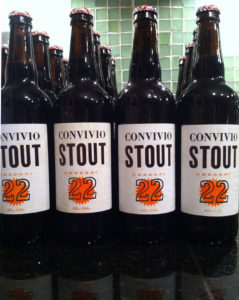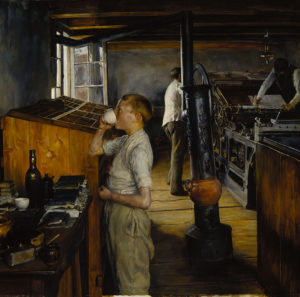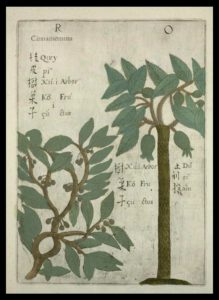The printing trade has a long and venerable history, and I imagine that for most of it, printers did not get much work done each year this last week of August; one’s Wayzgoose hangover from St. Bartholomew’s Day on the 24th was perhaps just passing in time for today, St. Augustine’s Day. The Bartlemas Wayzoose was the big celebration, but while St. Bart is a patron saint of bookbinders and book artists and his feast is a red letter day for printers, he is no patron saint of the craft. St. Augustine, however, is… and he is, as well, a patron saint of brewers. That’s a heady combination. As a printer myself, I have known many printers in my life; most of them are quite fond of beer. To have a day bestowed upon us that celebrates both of these things, well… it is clear that printers have long had two reasons to celebrate these waning days of summer. (And it is probably not a good time to take a delicate job to your local print shop.)
St. Augustine is also the patron saint of Aviles, the city in Spain that was home to explorer Pedro Menéndez, who sailed to the New World in 1565. The day his ships arrived here at this continent also happened to be St. Augustine’s Day, the 28th of August. He and his crew sailed into the area around Matanzas Bay, up in the northeast corner of Florida, and he named the new Spanish settlement there San Agustín, in honor of the day he first spotted land and in honor of his hometown’s patron saint. That town is St. Augustine, the oldest continuously occupied settlement of European origin in the United States.
As for St. Augustine of Hippo, he was born in Northern Africa, in what is now Tunisia, in 354, the son of St. Monica. He became a patron saint of printers thanks to his prolific writing. Books like his Confessions probably kept a lot of early printers in business. The confessions were easy to come by for Augustine: he was a fellow who liked a good time, at least early on in life, and this is the root of his patronage for brewers. His mother prayed for his conversion. Eventually he did convert and he began to write. He was canonized at the turn of the 14th century, about 150 years before Johannes Gutenberg perfected the idea of moveable type.
For St. Augustine’s Day this year, Seth and I will be quaffing a pint of our own brew and thanking the good saint for his patronage both of brewers and of printers. We brewed the beer ourselves with a little help from our friends at a local brewery, and we printed the labels for the bottles here at home from historic wood and metal types from our collection. It may be too subtle to see in the photo, but it took three print runs to print each label: there’s a base layer of wood type in transparent white, and upon that we printed the black text and orange sunburst. The “22” refers to the the 22 ounces contained in each bottle.
If we’ve bestowed some Convivio Stout upon you, this is perhaps the best night to crack it open. And if not, go get you something suitably saintly (St. Bernardus seems like a good choice). St. Augustine himself, though he would certainly recommend a healthy dose of moderation, may be there at your side raising a toast with you: Cheers to the printers! Huzzah to the brewers! May the good St. Augustine bless us all.


